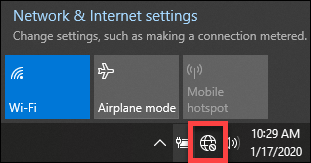

Your title makes this sound like a bad thing, but this looks like it would probably be preferable over being shown whatever it is YouTube wants you to see.


Your title makes this sound like a bad thing, but this looks like it would probably be preferable over being shown whatever it is YouTube wants you to see.


Can’t wait to see what they come up with next.
Framework smartphone please. Though I think that is VERY unlikely.


Hmm, I think this is an Mbin vs Lemmy issue. There are two differences in the URL:
%2C instead of ,. This part does not make a difference, because that resolves to a comma anyway= at the very end for some reason. This is what breaks it. Remove that character, and the URL works fineThe weird thing here is that the broken URL only ever shows up on Mbin. Below are a few different links to the comment in which you shared the broken URL. If you view the comment on your Mbin instance, it is indeed broken. But if you view it on this community’s Lemmy instance or my home instance, your same comment actually has the working URL. Something about how the post/comment were federated must have messed things up.


Is that not literally the same link as the OP?
EDIT: Ah, the OP’s edit from 30 minutes before your comment has not federated out to your instance yet.
There doesn’t need to be any evidence. This is something that is impossible to prove one way or the other, like Last Thursdayism.
Yes, this particular incident.
https://en.wikipedia.org/wiki/XZ_Utils_backdoor
In February 2024, a malicious backdoor was introduced to the Linux build of the xz utility within the liblzma library in versions 5.6.0 and 5.6.1 by an account using the name “Jia Tan”.[b][4] The backdoor gives an attacker who possesses a specific Ed448 private key remote code execution through OpenSSH on the affected Linux system. The issue has been given the Common Vulnerabilities and Exposures number CVE-2024-3094 and has been assigned a CVSS score of 10.0, the highest possible score.[5]
Microsoft employee and PostgreSQL developer Andres Freund reported the backdoor after investigating a performance regression in Debian Sid.[8] Freund noticed that SSH connections were generating an unexpectedly high amount of CPU usage as well as causing errors in Valgrind,[9] a memory debugging tool.[10]


Immediately get noticed
Realistically, though, we are only aware of that one because it was noticed in that unlikely scenario and then widely reported. For all we know, most open source backdoors are alive and well in our computers, having gone unnoticed for years.
Also the internet icon shows there is Internet.
Looks to me like the icon that indicates the machine being connected to a network, but that network is not connected to the Internet.

How would a web browser achieve that? The only thing I can think of is for the browser to choose what sort of web content should be filtered out and what should actually be displayed to the user, which I think we all agree is not what you would want your browser to choose.